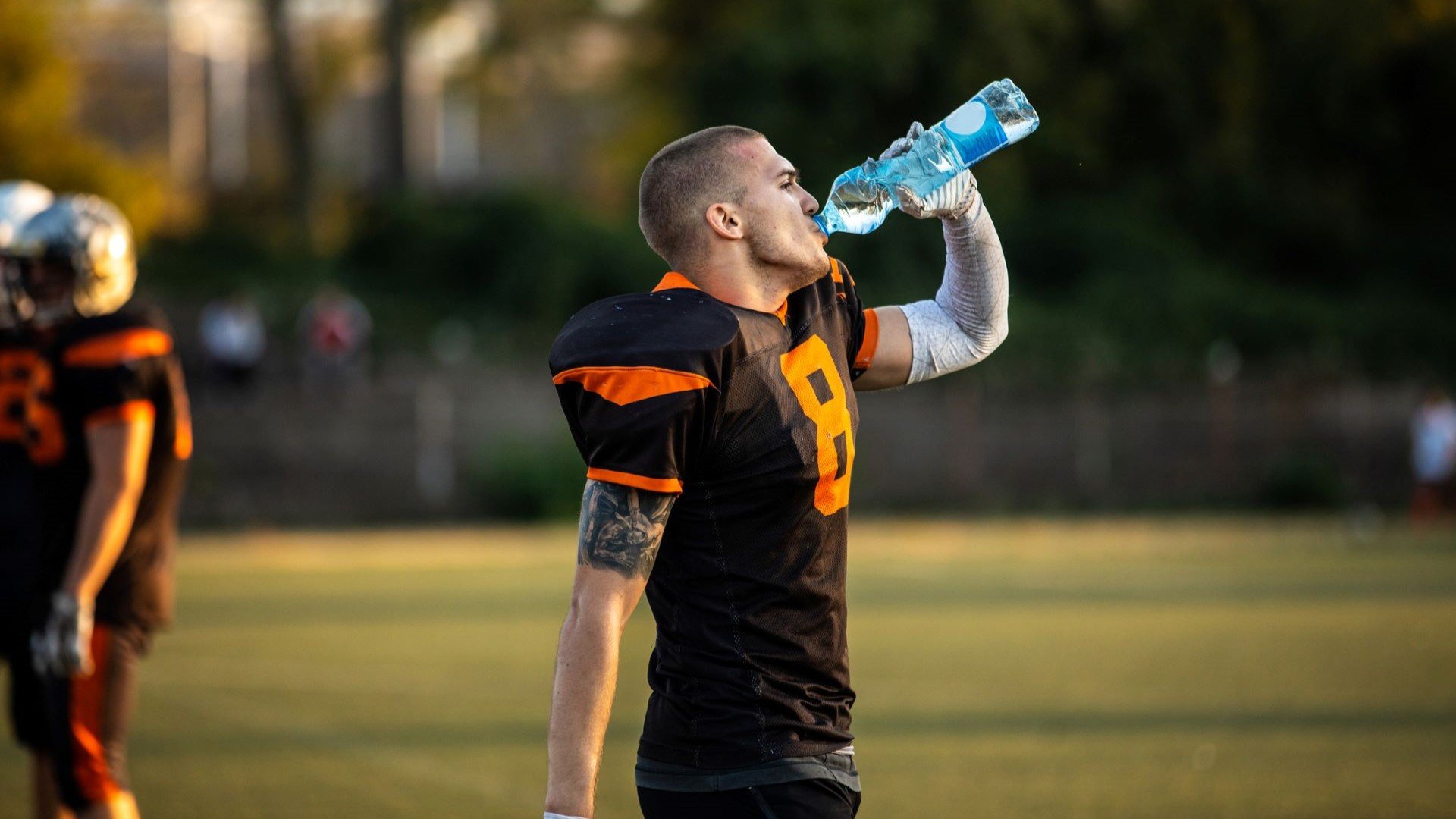Reminders: Heat Illness in Sports

Heat-related illness is preventable, but it remains a leading cause of death and injury among college and high school athletes. Preparation and planning are key to saving lives. United Educators (UE) claims involving heat-related illnesses in athletes show that poor planning and improper response can lead to an athlete’s injury or death.
By implementing heat illness reduction programs, institutions can enhance the overall safety of their athletic practices and competitions.
Types of Heat Illness
All athletes are susceptible to the risks of exercising in a hot environment — particularly those in high-exertion sports such as football. Exercise-related heat illnesses consist of three separate but related conditions: exertional heat stroke (EHS), heat exhaustion, and exercise-associated muscle cramps.
- EHS: The body temperature is over 104 degrees Fahrenheit and central nervous system dysfunction (for example, collapse, aggressiveness, irritability, confusion, altered consciousness) occurs. It is severe and can cause multi-organ system failure and death if not quickly recognized and treated.
- Heat exhaustion: The person is unable to exercise effectively in the heat, secondary to a combination of factors including cardiovascular insufficiency, hypotension, hypoglycemia (low blood sugar), energy depletion, and central fatigue. This condition is usually associated with an elevated but safe body temperature (between 98.6 F and 104 F), as well as heavy sweating and possible signs of dehydration.
- Exercise-associated muscle cramps: The person experiences sudden, painful, involuntary muscle spasms during or soon after exercise.
Take these steps and examine the resources listed to create or assess your institution’s heat-illness reduction practices.
Conduct Pre-Participation Screenings
College and high school student-athletes should undergo a pre-participation physical exam (PPE), which is required by the NCAA and most high school athletic associations. The American Academy of Pediatrics sample evaluation applies to all levels of sport. After the initial medical evaluation, request an annual updated history through a health status questionnaire completed by the student or a parent (for minors).
Sickle cell trait screening should be a part of the evaluation, as it can increase the risk of exercise-related injuries and deaths, particularly during conditions of intense heat and dehydration.
Train Staff and Athletes about Symptoms and Treatment
Educate your athletic staff and student-athletes about the dangers of heat illness and prevention steps. Complete heat illness training before every new athletic season, so your student-athletes, coaches, and other athletic staff are reminded of symptoms to watch for and steps to take.
Remind staff and athletes about the importance of acclimating student-athletes to weather conditions, workouts, and new equipment, as heat illness occurs with increased frequency during the first seven to 14 days of practice. Include information about proper hydration, so your athletes hydrate efficiently but don’t overhydrate. For K-12 athletes, consider training for parents as well.
Keep Response Tools Accessible
Ensure staff have the proper tools readily available to identify and treat heat illness, including a heat stress monitor, thermometer, and cold water immersion tub. Heat stress monitors detect environmental risks to players; they are an inexpensive but effective tool to measure heat intensity. Some states require a wet-bulb globe temperature (WBGT) reading (measured by the heat stress monitor) before high school athletic practices or competitions, and the NCAA suggests heightened caution when the WBGT is above 82 F.
Ensure coaches and staff have a thermometer to measure core temperature (only rectal thermometers used by trained medical staff provide an accurate measurement) and a cold water immersion tub available. Cold water immersion tubs can save lives if used within 10 minutes of exertional heat stroke onset, so the tub (along with ice and water) should be easily accessible, or already set up depending on your institution’s policy, and staff should be trained to use it quickly.
Create or Update Your Emergency Action Plan
Your emergency action plan should list the steps for handling heat illness. Seek input from medical personnel and athletic staff when drafting the plan, and review and practice it annually with the athletic staff so all people understand their responsibilities and are trained in how to fulfill them.
Post emergency action plans at all practice sites, listing signs of heat illness, responsibilities of staff, contact information for emergency response, and venue details (including the address).
Review State and Athletic Organization Requirements
Some states have laws or regulations requiring a planned response to heat illness, especially for high schools. Keep abreast of your area’s pending initiatives, as your state may have similar laws in the works.
The NCAA, local leagues, and other athletic organizations may have mandates or suggestions to incorporate into your institution’s plan as well.
More From UE
Reduce Heat Illness in Athletes
Youth Athletics Course Collection: Heat Illness Prevention
Additional Resources
Centers for Disease Control & Prevention: Heat and Athletes
Korey Stringer Institute: Sample Exertional Heat Illness Policy & Procedures
About the Author
-

Christine McHugh, Esq., ARM
Associate Vice President of Risk Management
Christine is responsible for providing day-to-day management of the Risk Management department’s functional operations and works cross-functionally to advance the department’s ability to meet UE goals, objectives, and provide sound thought leadership to the educational community. Before being promoted to the role in June 2024, Christine was a Senior Risk Management Counsel. Her areas of expertise were employment law, sexual assault prevention, protection of minors, traumatic brain injury, and diversity, equity, and inclusion. Prior to joining the Risk Research team, she handled UE liability claims for several years. She previously practiced employment and higher education law.